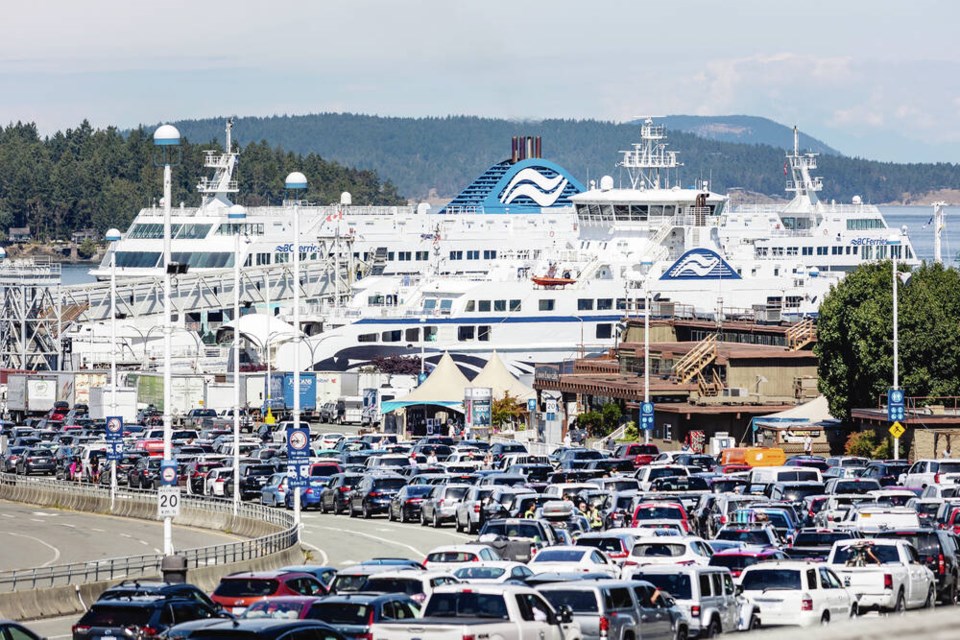B.C. Ferries passengers could face a jump in fares once the recent $500 million boost to the system runs out after four years unless fresh money comes in, says the B.C. Ferry Commission.
Commisioner Eva Hage expects that without additional funds there will be a “very high price cap because fare revenues from users would have to make up for that money from the government.”
The province contributes $194 million annually to the ferry system. The extra $500 million announced in February, under a separate ferry fare affordability contract, was part of a budget surplus which saw the province distribute money to ministries and other government bodies.
The $500 million is intended to keep annual fare increases to three per cent for four years. At the time it was announced, it was feared that ferry rates could climb by double digits.
In March, Hage announced a preliminary annual price cap of 9.2 per cent. She is now in the midst of working with consultants to determine what the actual price cap will be.
The decision is to be announced Sept. 30 and the new annual average rate comes into effect on April 1, 2024.
Hage’s analysis updates information about B.C. Ferries not available earlier in the year. Last year’s annual report has been issued and the coming year’s budget is in place.
Her financial model takes into account factors such as what B.C. Ferries anticipates for revenues (including the $500 million), operating costs, ridership, debt servicing costs and capital planning.
A gap in the bottom line is normally covered by ferry users who pay for it through fares. “A key point that really has to be made is the cost of the ferry system grows much higher than inflation,” Hage said.
“They have a huge capital plan and the cost of building ships and terminals — all of that doesn’t really follow inflation.”
The ferry system, even when operating efficiently, will see costs surpass inflation, Hage said. Costs include not just capital expenses but operating costs as well.
It is erroneous to expecting the cost of the ferry system to only rise in step with inflation, she said.
For example, measures to address emissions and move to alternate fuels are expensive.
The $500 million will be allocated with $50 million going toward B.C. Ferries fares in the first year, $100 million in the second year, $150 million in the third year, and $200 million the fourth year.
If B.C. Ferries does not need the full amount it can talk to the province about using it for other purposes, such as initiatives to tackle greenhouse gas emissions.
The ferry fare affordability contract for the $500 million expires at the end of four years, Hage said.
No provision has been made for another $200 million per year to go to the ferry system.
“It may come back,” she said. “But right now we have no evidence of that or no commitment.”
She predicts that in the end provincial money would come through. “But this is kind of an unusual situation. We haven’t really had this happening before.”




